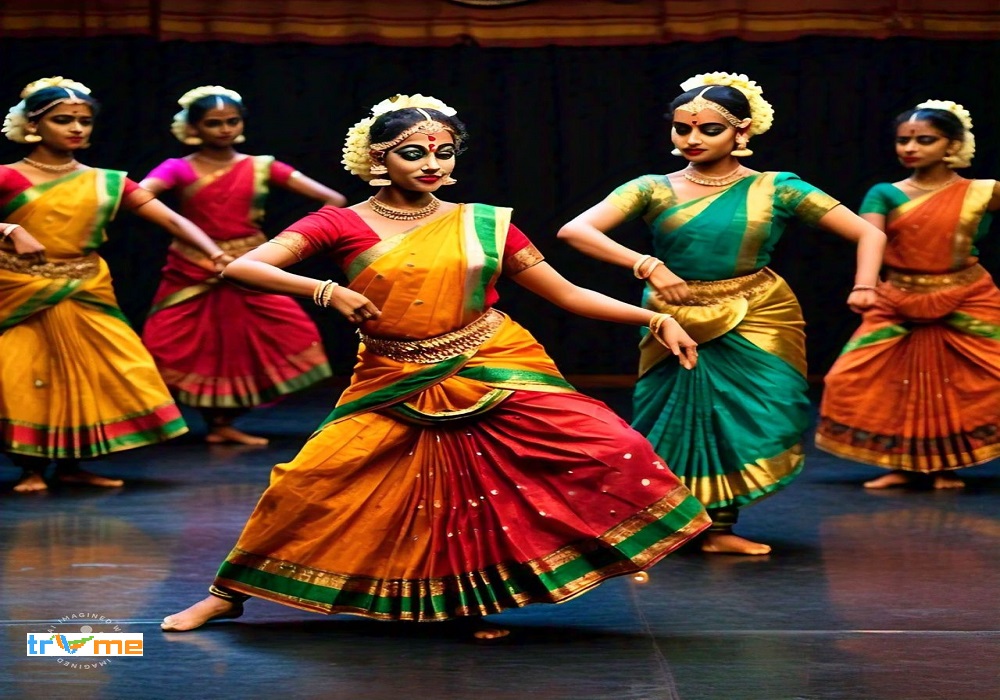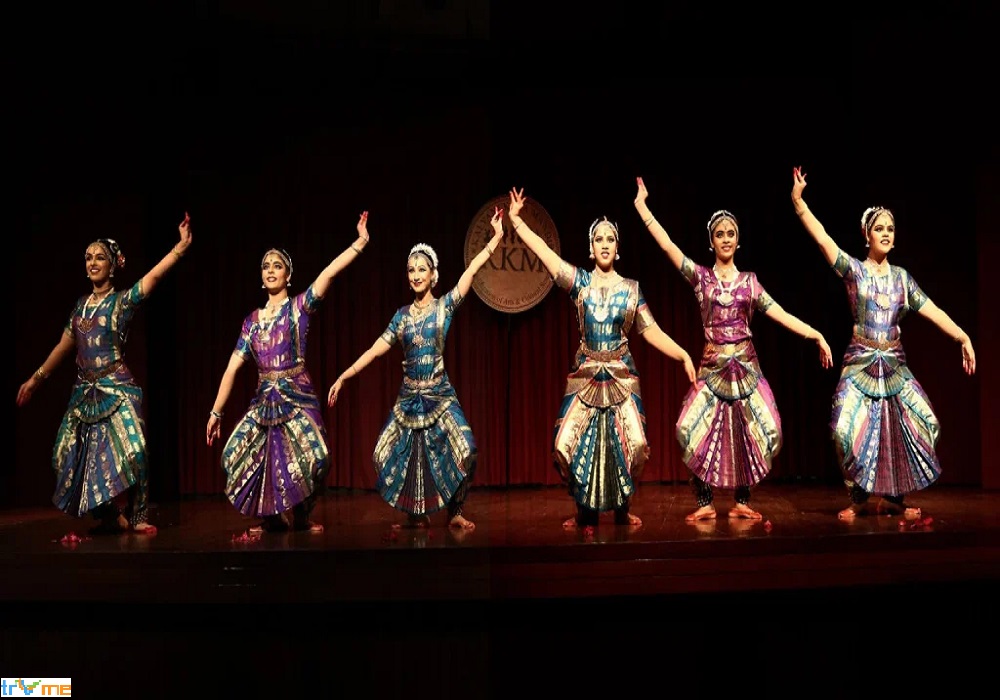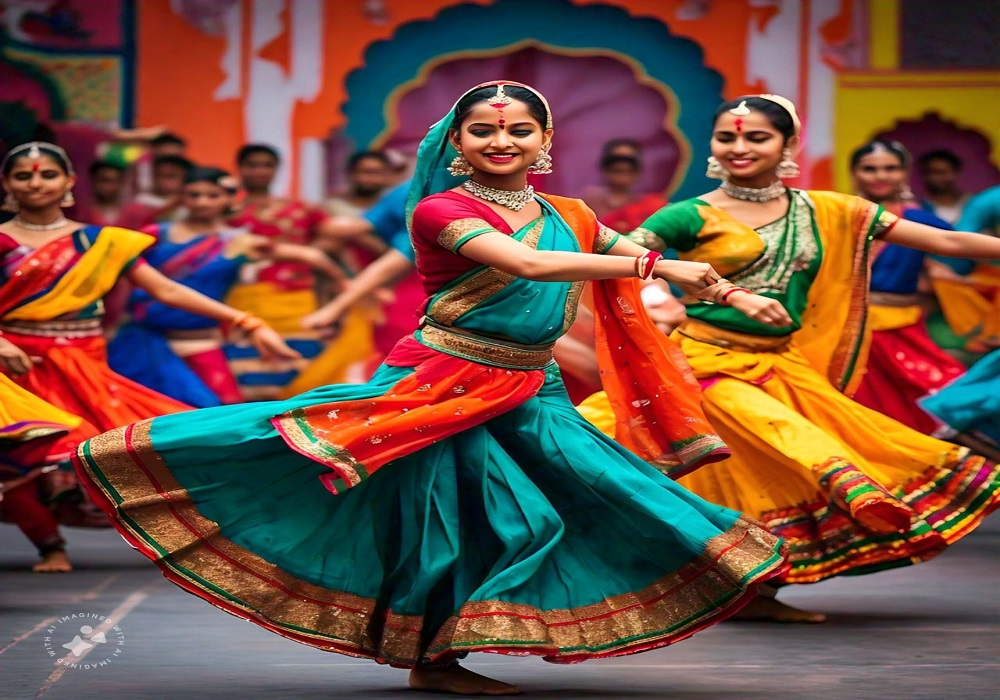Martial Arts Dance
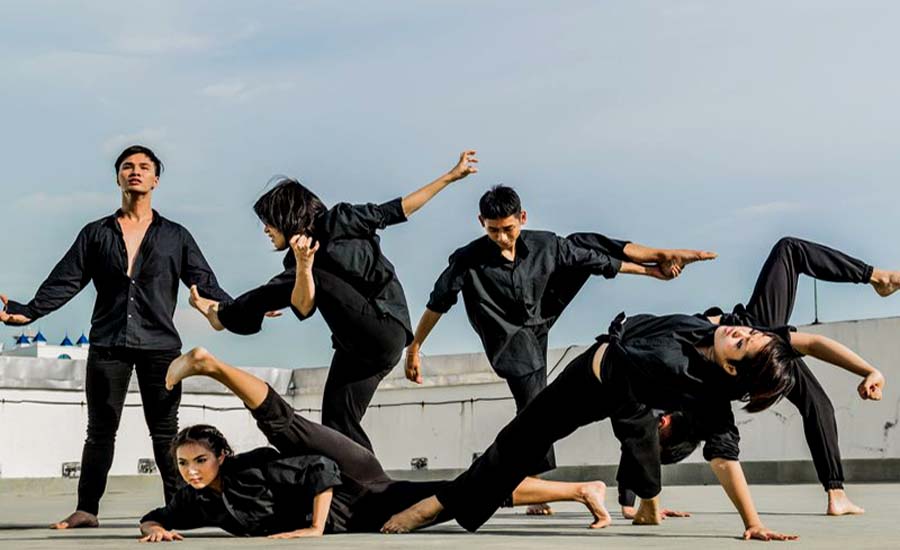
Published: 17 Sep 2021 • Last Updated: 03 Feb 2023
Martial Art Dance Troupe
In India, numerous dance forms and high skilled art is well known to exist. Indians are already popular in terms of unsung talent and highs skilled talent in art, culture and identities as is renowned for its combative techniques that have created since old occasions. These days these works of art are utilized in ceremonies, festivities, in sports, method for actual wellness, as a self protection however prior it is utilized for fighting. A considerable lot of the Arts are identified with dance, Yoga and so forth
Martial art of India is profoundly regarded fine art. Not at all like the overall insight that hand to hand fighting are about battle and battles, there is a lot further agreement that goes into it. Dominated with devotion, mental fortitude and 'inward harmony', as broadly said by Po in Kung Fu Panda, hand to hand fighting characterize an individual's discipline and equilibrium more than their solidarity. Military works of art India are the same. What's more, however the Chinese and Japanese hand to hand fighting are notable all through the world, Indian combative techniques are gradually becoming famous, however they actually have far to go.
Here is investigating a portion of the conventional military specialty of India. Each of these isn't just an all encompassing work of art all alone, yet in addition, is intelligent of practices of its place of beginning. All in all, these hand to hand fighting are established in the way of life of the land from where they come. Every one of these structures additionally has an otherworldly association, where actual practicing and battle is firmly identified with mental soundness. Petitions and holiness are a necessary piece of combative techniques preparing and exhibitions. One more intriguing part of the vast majority of these military works of art is the readiness that goes into it before the beginning of a battle or execution, for example, oil rubs in certain structures, and individual clothing and weapons (whenever required). At last, there is an unpretentious incorporation of the Indian dance structures with the hand to hand fighting, each intersection into the domain of the other effortlessly and greatness.
Well known and common Martial Arts are talked about underneath:
Kalaripayattu (Oldest Martial Art in India) -
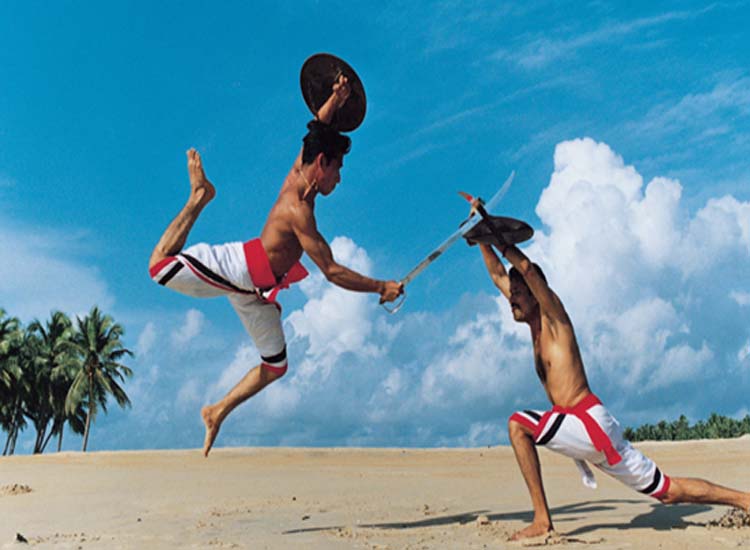
Perhaps the most seasoned type of hand to hand fighting, Kalaripayattu discovers its starting points in Kerala. It tends to be performed with exposed hands or utilizing swords. Accepted to have been presented by Parasurama this work of art incorporates strikes and kicks. Footwork is the main part of Kalaripayattu, where Kalari implies a preparation lobby or school and 'payattu' means practice.
Kalari is a Malayalam word which means School/recreation center/preparing corridor where Martial expressions are polished or educated. Kalaripayattu was presented as military craftsmanship by a legend, sage Parasurama, who assembled sanctuaries. This craftsmanship is utilized as a method for unarmed self-preservation and an approach to accomplish actual wellness today. Likewise utilized in conventional customs and services. It incorporates mock duels (furnished and unarmed battle) and actual activities, significant angle is the way of battling and is nor joined by any drumming or tune. Its significant key is footwork which incorporates kicks, strikes and weapon based practice.
Its notoriety additionally increments with the film Ashoka and the Myth. Ladies additionally rehearsed this craftsmanship, Unniyarcha; an amazing courageous woman won many fights utilizing this military workmanship.
Silambam -
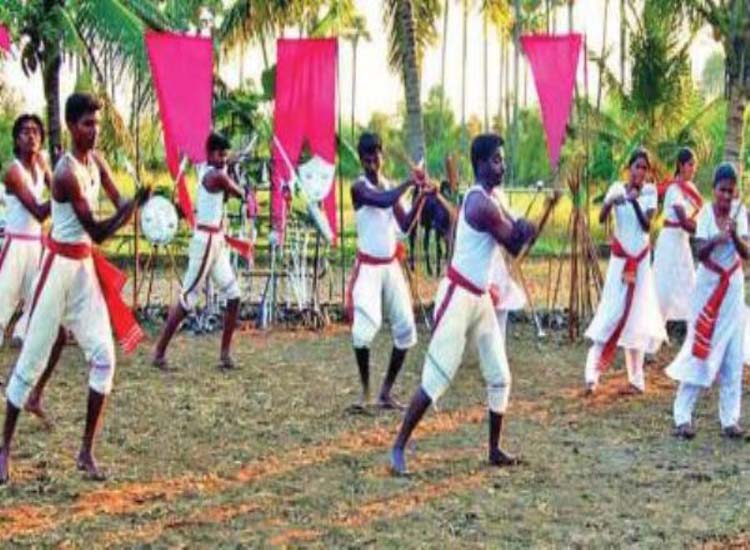
From Tamil Nadu, Silambam utilizes creature developments as a type of assault and guard. It is turning into an undeniably well known work of art, particularly with ladies who need to gain proficiency with the distinctive self-preservation moves to ensure themselves. A long stick or staff is utilized for mock battles or practice. Silambam is likewise one of the most seasoned military works of art that utilization footwork and assault the body at various levels like a snake, bird of prey, tiger, or monkey would. There is a utilization of power and brilliant methodologies.
Silambam is advanced in Tamil Nadu by the rulers Pandya, Chola and Chera and the reference to the offer of Silambam fights, pearls, blades and armours can be found in a Tamil writing 'Silapaddigaram'. This craftsmanship likewise ventured out to Malaysia, where it is a well known game separated from a self protection method. For mock battling and self-preservation the long-staff procedure is utilized. Infact, Lord Muruga (in Tamil Mythology) and sage Agasthya are credited with the formation of Silambam. In any event, during Vedic age, preparing was bestowed to young fellows as a custom and for a crisis.
Thang-ta and Sarit Sarak -
This military artistic expression is from Manipur where 'thang' signifies a blade, and 'ta' signifies the lance. Sarit Sarak, then again, is the unarmed artistic expression. Thang-Ta is additionally called Huyen Lallong and is worked on utilizing different weapons, like tomahawks and safeguards. The sword, in any case, remains Thang Ta's most worshipped belonging with various moves that show the learner different methods and drills.
Thang alludes to a 'blade' while Ta alludes to a 'skewer' and is an equipped military craftsmanship though Sarit Sarak is an unarmed work of art that utilizations hand to hand battle. In seventeenth century this workmanship was utilized by Manipuri rulers against Britishers later on when Britishers caught the region this strategy was prohibited. Thang-Ta is otherwise called HuyenLallong, which is a famous old military workmanship which utilizes different weapons including a hatchet and a safeguard.
It is rehearsed in 3 distinctive manners: Firstly, ceremonial in nature connected with tantric practices, besides, hypnotizing execution of blade and sword moves and thirdly, is the real strategy of battling.
Thoda -
From Himachal Pradesh, this work of art utilizes bows and bolts. Thoda implies a wooden piece joined to the top of a bolt. This military workmanship is likewise proceeded as a social and brandishing action. Firmly identified with the legends of Mahabharata the Thoda game is played with two groups with 500 players in each. Not all are toxophilite but on the other hand are artists that assist with boosting the confidence of the group.
Thoda name is gotten from the round wooden piece joined to the top of a bolt to limit its deadly potential. It is a combination of military workmanship, game and culture. It happens during Baisakhi consistently. This military workmanship depends on a player's of expertise of toxophilism and can be gone back at the hour of Mahabharata where bows and bolts were utilized in the valleys of Kullu and Manali. In the game, there are 2 gatherings of 500 individuals each. Every one of them are not toxophilite but rather artists likewise who accompanied them to support the resolve of their separate groups.
The two groups are called Pashis and Saathis, who accepted to be the relatives of Pandavas and Kauravas of Mahabharata.
Gatka -
Starting from Punjab this military craftsmanship is accepted to have presented by the Sikh heroes. Its prior form, called Shastar Vidya, was prohibited by the British after the Anglo-Sikh conflicts. Notwithstanding, Gatka stays in the soul and moves a lot of like the first work of art, however its weapons have changed after some time. Gatka is performed, utilizing sticks, kirpan, swords and kataar. It is performed on various celebrations and in fairs.
Gatka is a weapon based military work of art performed by Sikhs of Punjab. Gatka implies whose opportunity has a place with elegance. Others say that 'Gatka' comes from a Sanskrit word 'Gadha' signifies mace. This workmanship utilizes weapons like Kirpan, Talwar and Kataar. It is shown in different events, festivities in the state including fairs.
Lathi -
Discovering its underlying foundations in Punjab and Bengal, the Lathi Khel is a type of hand to hand fighting that utilizes the most seasoned weaponry, the 'lathi' or stick for battle. The stick can be utilized and used in various manners to make the blow deadly or light. The Indian Police utilizes the Lathi to date as a strong weapon.
Lathi is one of the most established weapon utilized in hand to hand fighting. Lathi alludes to a 'stick' fundamentally stick sticks which is for the most part 6 to 8 feet long and once in a while tipped. It is likewise a not unexpected game in different towns of the country.
Inbuan Wrestling -
This workmanship comprises of extremely severe principles that prohobit venturing out the circle, kicking and knee twisting. It likewise includes getting of the belt worn around their midsection by the grapplers. At the point when individuals relocated from Burma to Lushai slopes then this fine art was viewed as a game.
Kuttu Varisai -
Again an unarmed fine art, Kuttu Varisai focuses on hooking and locking methods. Famous in South India this work of art utilizes many strides from yoga and tumbling.
This craftsmanship was forst referenced in Sangam writing in the first or second century B.C. Kuttu Varisai signifies 'void hand battle'. It is an unarmed Dravidian military craftsmanship used to propel physicality and footwork through yoga, gymanstics, breathing activities and so forth. It additionally utilizes creature based sets including snake, falcon, tiger, elephant and monkey.
Musti Yuddha -
It is an unarmed military work of art. Since 1960 it is a famous workmanship. It consolidates the improvement of every one of the three viewpoints physical, mental and otherworldly.
The battles in this workmanship are named on the Hindu God and partitioned into four classifications. The first is known as Jambuvanti that alludes to the driving the adversary into accommodation through locking and holding. Second is Hanumanti, which is intended for specialized predominance. Third alludes to Bhimaseni, which focusses on sheer strength and fourth is considered Jarasandhi that focuses on appendage and joint breaking.
Pari-Khanda -
This military work of art, from Bihar, was made by the Rajputs. Pari implies the safeguard and khanda implies blade. The moves, strategy, and steps, are likewise utilized in the popular Chhau dance of Bihar.
'Pari' signifies safeguard while 'khanda' alludes to sword. Subsequently, both safeguard and sword are utilized in this workmanship. It includes battling utilizing Sword and Shield. Its means and methods are utilized in Chhau dance of Bihar.
Kushti -
Customary wrestling or Kushti is maybe the most famous and pervasive military work of art. Promoted by films, Kushti started during the Mughal Era where the neighborhood sport called, Malla Yuddha, was joined with the Persian comparable Varzesh-e-Bastani.
India is the place where there is numerous military works of art that should be empowered and scholarly by people in the future. With karate, taekwondo, and Kung Fu courses accessible in schools and other preparing establishments, it is time that the Indian hand to hand fighting likewise track down a legitimate spot. The initial step is monitoring their reality. A few military specialists practice these Indian military artistic expressions. It is likewise an ideal opportunity to give them acknowledgment and gain from them before it is past the point of no return.

